#lorawan arduino
Explore tagged Tumblr posts
Text
STM32 e módulo LoRaWAN da Radioenge
Aprenda como eu fiz uma integração do módulo LoRaWAN da Radioenge e STM32 através da STM32CubeIDE
O STM32 e módulo LoRaWAN da Radioenge são uma bela junção para aplicações de baixo consumo de energia e longo alcance, tanto é que o próprio módulo tem um STM32L presente. Este projeto foi inteiramente construído dentro da STM32CubeIDE como uma forma de estudo e exemplo, então seu funcionamento é um pouco diferente do funcionamento no Arduino IDE. De qualquer forma a infraestrutura está o mais…
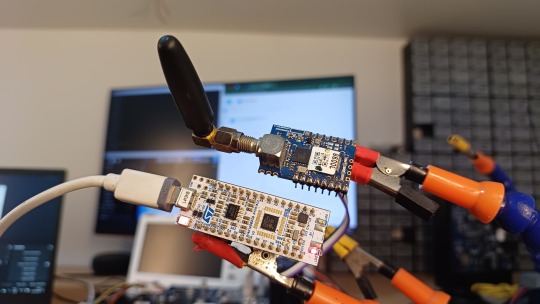
View On WordPress
#arduino lorawan#arduino lorawan library#helium lorawan#lorawan#lorawan alliance#lorawan arduino#lorawan board#lorawan class a#lorawan communicator#lorawan devices#lorawan diagram#lorawan esp32#lorawan gateway#lorawan network#lorawan stm32
0 notes
Text
Elmalo, let's commit to that direction. We'll start with a robust Sensor Fusion Layer Prototype that forms the nervous system of Iron Spine, enabling tangible, live data connectivity from the field into the AI's processing core. Below is a detailed technical blueprint that outlines the approach, components, and future integrability with your Empathic AI Core.
1. Hardware Selection
Edge Devices:
Primary Platform: NVIDIA Jetson AGX Xavier or Nano for on-site processing. Their GPU acceleration is perfect for real-time preprocessing and running early fusion algorithms.
Supplementary Controllers: Raspberry Pi Compute Modules or Arduino-based microcontrollers to gather data from specific sensors when cost or miniaturization is critical.
Sensor Modalities:
Environmental Sensors: Radiation detectors, pressure sensors, temperature/humidity sensors—critical for extreme environments (space, deep sea, underground).
Motion & Optical Sensors: Insect-inspired motion sensors, high-resolution cameras, and inertial measurement units (IMUs) to capture detailed movement and orientation.
Acoustic & RF Sensors: Microphones, sonar, and RF sensors for detecting vibrational, audio, or electromagnetic signals.
2. Software Stack and Data Flow Pipeline
Data Ingestion:
Frameworks: Utilize Apache Kafka or Apache NiFi to build a robust, scalable data pipeline that can handle streaming sensor data in real time.
Protocol: MQTT or LoRaWAN can serve as the communication backbone in environments where connectivity is intermittent or bandwidth-constrained.
Data Preprocessing & Filtering:
Edge Analytics: Develop tailored algorithms that run on your edge devices—leveraging NVIDIA’s TensorRT for accelerated inference—to filter raw inputs and perform preliminary sensor fusion.
Fusion Algorithms: Employ Kalman or Particle Filters to synthesize multiple sensor streams into actionable readings.
Data Abstraction Layer:
API Endpoints: Create modular interfaces that transform fused sensor data into abstracted, standardized feeds for higher-level consumption by the AI core later.
Middleware: Consider microservices that handle data routing, error correction, and redundancy mechanisms to ensure data integrity under harsh conditions.
3. Infrastructure Deployment Map
4. Future Hooks for Empathic AI Core Integration
API-Driven Design: The sensor fusion module will produce standardized, real-time data feeds. These endpoints will act as the bridge to plug in your Empathic AI Core whenever you’re ready to evolve the “soul” of Iron Spine.
Modular Data Abstraction: Build abstraction layers that allow easy mapping of raw sensor data into higher-level representations—ideal for feeding into predictive, decision-making models later.
Feedback Mechanisms: Implement logging and event-based triggers from the sensor fusion system to continuously improve both hardware and AI components based on real-world performance and environmental nuance.
5. Roadmap and Next Steps
Design & Prototype:
Define the hardware specifications for edge devices and sensor modules.
Develop a small-scale sensor hub integrating a few key sensor types (e.g., motion + environmental).
Data Pipeline Setup:
Set up your data ingestion framework (e.g., Apache Kafka cluster).
Prototype and evaluate basic preprocessing and fusion algorithms on your chosen edge device.
Field Testing:
Deploy the prototype in a controlled environment similar to your target extremes (e.g., a pressure chamber, simulated low-gravity environment).
Refine data accuracy and real-time performance based on initial feedback.
Integration Preparation:
Build standardized API interfaces for future connection with the Empathic AI Core.
Document system architecture to ensure a smooth handoff between the hardware-first and AI-core teams.
Elmalo, this blueprint establishes a tangible, modular system that grounds Iron Spine in reality. It not only demonstrates your vision but also builds the foundational “nervous system” that your emergent, empathic AI will later use to perceive and interact with its environment.
Does this detailed roadmap align with your vision? Would you like to dive further into any individual section—perhaps starting with hardware specifications, software configuration, or the integration strategy for the future AI core?
0 notes
Text
What Are the Essential Tools and Equipment for a STEM Lab in Rajasthan?

Introduction: Building a Future-Ready STEM Lab in Rajasthan
With Rajasthan embracing technology-driven education, setting up a STEM lab in Rajasthan has become essential for schools. A well-equipped STEM lab in Rajasthan provides hands-on learning experiences that prepare students for careers in engineering, robotics, AI, and more. But what tools and equipment are needed to build a high-quality STEM lab in Rajasthan?
Here’s a complete guide to the essential tools and equipment for a cutting-edge STEM lab in Rajasthan.
1. Robotics Kits & Coding Tools for a STEM Lab in Rajasthan
Robotics and coding are integral parts of STEM education. Schools need:
Arduino & Raspberry Pi Kits – For learning programming, electronics, and automation
LEGO Mindstorms & VEX Robotics Kits – To build and program robots
Scratch & Python Coding Platforms – For beginner-friendly coding exercises
Drones & AI Modules – To introduce students to artificial intelligence and automation
These tools help students develop logical thinking and computational skills, making them ready for future careers in technology. A STEM lab in Rajasthan equipped with robotics fosters innovation and creativity.
2. 3D Printers & Prototyping Equipment for a STEM Lab in Rajasthan
Innovation thrives when students can create prototypes of their ideas. A STEM lab in Rajasthan should include:
3D Printers (like Creality or Ultimaker) – For designing and printing functional models
Laser Cutters & CNC Machines – To teach students about precision manufacturing
3D Modeling Software (Tinkercad, Fusion 360) – To design real-world engineering projects
By incorporating prototyping tools, students in STEM labs in Rajasthan gain exposure to product development, engineering, and entrepreneurship.
3. Science & Electronics Experiment Kits in a STEM Lab in Rajasthan
Hands-on experiments make learning science interactive and engaging. Schools should equip their STEM lab in Rajasthan with:
Physics Kits (Newton’s Laws, Optics, and Electromagnetism Experiments)
Chemistry Kits (Safe Lab Chemicals, Beakers, and Reaction Experiments)
Biology Kits (Microscopes, DNA Extraction, and Ecosystem Models)
Circuit Boards & Soldering Kits – To learn about electrical engineering and IoT
With these kits, students in STEM labs in Rajasthan can explore scientific concepts practically, strengthening their understanding and problem-solving skills.
4. AI & Machine Learning Tools for a STEM Lab in Rajasthan
With the rise of AI and data science, it’s crucial to introduce students to basic AI concepts. Essential tools for a STEM lab in Rajasthan include:
AI Development Boards (Jetson Nano, Google Coral) – For experimenting with AI projects
Machine Learning Platforms (Google Colab, TensorFlow, Teachable Machine) – For building AI models
Speech & Image Recognition Kits – To introduce students to computer vision and natural language processing
AI tools allow students in STEM labs in Rajasthan to work on cutting-edge projects, boosting their career opportunities in AI and automation.
5. IoT & Smart Technology Kits for a STEM Lab in Rajasthan
IoT is transforming industries, and students must learn how smart devices work. Schools should include in their STEM lab in Rajasthan:
IoT Development Kits (ESP8266, NodeMCU, Arduino IoT Cloud)
Sensors (Temperature, Motion, Humidity, RFID) – To build smart home and automation projects
Wireless Modules (Bluetooth, Wi-Fi, LoRaWAN) – To introduce connected device technology
With IoT tools, students in STEM labs in Rajasthan can develop real-world smart solutions, preparing them for the future of technology.
6. Renewable Energy & Environmental Science Kits in a STEM Lab in Rajasthan
Sustainability is a key focus in Rajasthan, and students should learn about renewable energy sources. A STEM lab in Rajasthan should include:
Solar Panel Kits – To teach about solar energy and power generation
Wind Turbine Models – For understanding wind energy
Water Purification & Conservation Experiments – To promote sustainability projects
These tools help students in STEM labs in Rajasthan develop eco-friendly solutions for environmental challenges.
7. Virtual & Augmented Reality (VR/AR) Systems in a STEM Lab in Rajasthan
Immersive learning through VR and AR makes STEM education more engaging. Schools should invest in:
VR Headsets (Oculus Quest, HTC Vive) – To explore virtual science labs and simulations
AR Learning Apps (Google Expeditions, Merge Cube) – For interactive learning experiences
3D Anatomy & Space Exploration Software – To make subjects like biology and astronomy exciting
By integrating VR and AR, students in STEM labs in Rajasthan experience interactive, hands-on education, improving conceptual understanding.
Start Building a STEM Lab in Rajasthan Today!
Setting up a STEM lab in Rajasthan is an investment in the future. With the right tools, students can:
Develop critical problem-solving skills
Engage in hands-on, innovative learning
Prepare for future careers in science and technology
Want to equip your school with a high-tech STEM lab in Rajasthan? Contact us today to explore funding options and expert guidance!
0 notes
Text
How do you handle water meter reading using Lora (Raspberry Pi, Arduino, Lorawan, IoT)?
Install a LoRaWAN Gateway: Begin by setting up a LoRaWAN gateway. This gateway acts as a receiver for data transmitted by LoRaWAN devices and forwards it to the network server. It connects to the internet and communicates with LoRaWAN devices within its coverage area.
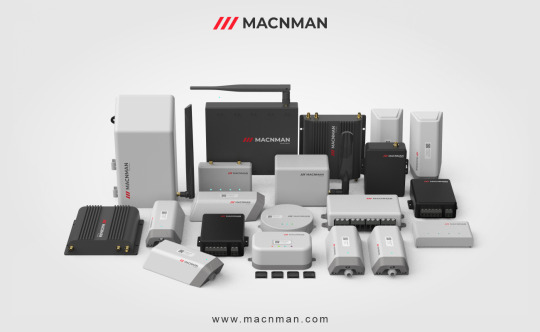
Attach LoRaWAN Modules to Water Meters: Next, equip your water meters with LoRaWAN modules or sensors. These modules are responsible for gathering important data, such as water consumption readings, from the meters.
Develop Firmware/Software: Program your Raspberry Pi or Arduino device to collect data from the water meters through the LoRaWAN modules. This programming may involve utilizing the LoRaWAN library or SDK provided by the module manufacturer.
Set Up a LoRaWAN Network Server: Install and configure a LoRaWAN network server. This server will receive and handle data from the water meters. Its functions include managing device registrations, routing messages, and storing data.
Ensure Secure Data Transmission and Encryption: Utilize LoRaWAN protocols to securely transmit the water meter readings from your Raspberry Pi or Arduino to the network server. LoRaWAN uses AES encryption to safeguard data privacy during transmission.
Data Processing and Storage: Once the network server receives the data, process it as needed. Extract the relevant water consumption readings and conduct any necessary calculations or validations. Store the data in a database or another suitable storage system.
Integration and Visualization: To make sense of the data, integrate it with your chosen IoT platform or application. This integration allows for further analysis and visualization. Consider creating a web-based dashboard or a mobile app to present the water consumption data in a user-friendly and informative manner.
It's important to keep in mind that the specific steps and details of implementation may vary based on the hardware and software components you select and any unique requirements associated with your water meter system. Adapt the above steps as necessary to align with your specific setup and development environment.
0 notes
Text
The Things Network: Primeiros passos
The Things Nework é o maior network server de LoRaWAN do planeta, sendo totalmente colaborativo e gratuito. Venha aprender a usar
A The Things Network ou TTN é um servidor de rede LoRaWAN colaborativa que permite que qualquer pessoa ou empresa possa ser um ponto de conexão LoRaWAN como também pode utilizar a cobertura já existente para conectar os end devices tudo de forma gratuita. 1 O que é The Things Network? A TTN é um network server criado em 2015 com o objetivo de criar uma cobertura global e colaborativa de LoRaWAN…
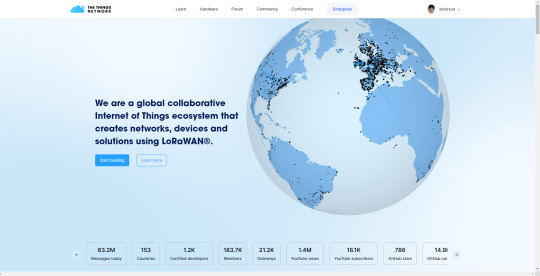
Ver no WordPress
#arduino lorawan#arduino lorawan library#esp32 lorawan#lorawan#lorawan application server#lorawan concentrator#lorawan devices#lorawan distance#lorawan gateway#lorawan network#lorawan the things network#the things network#the things network gateway#the things network map
0 notes
Photo

Це пізда, це відбувається насправді. Коли ти жив мирно, а на твою країну напали повномасштабно російські війська. Але згинуть наші вороженьки. It's going around really. Believe only the Ukrainian media .. because they see it with their own eyes. #ukraine🇺🇦 #ukrainegirl #ukraine #esp32 #diyelectronics #electronics #arduino #makers #украина #ukraine #diy #prototype #aelmaker #электроника #homemade #electronics #arduinomega #18650 #diyprojects #lorawan #lora (Zaporozhye, Ukraine) https://www.instagram.com/p/CaXTaORt7YB/?utm_medium=tumblr
#ukraine🇺🇦#ukrainegirl#ukraine#esp32#diyelectronics#electronics#arduino#makers#украина#diy#prototype#aelmaker#электроника#homemade#arduinomega#18650#diyprojects#lorawan#lora
0 notes
Text
Arduino MKRシリーズ、スイッチサイエンスウェブショップで2021年8⽉6⽇販売開始
Arduino MKRシリーズ、スイッチサイエンスウェブショップで2021年8⽉6⽇販売開始 #ArduinoMKRシリーズ #スイッチサイエンス #Wi-Fi #LoRaWAN #GSM通信 #新製品 #Arduino
これは嬉しい。 LoRaWAN や Wi-Fi 接続に対応した Arduino がスイッチサイエンスで販売開始となっています。 製品は2つに分かれていて、それぞれのお���段も、それほどお高くはない感じですので、これは使えそうな製品ですね。 Arduino MKRシリーズ、スイッチサイエンスウェブショップで2021年8⽉6⽇販売開始 株式会社スイッチサイエンス 株式会社スイッチサイエンス(以下スイッチサイエンス、本社:東京都新宿区、代表取締役:金本茂)は、Arduino Holding社のArduino MKRシリーズを、スイッチサイエンスのウェブショップにて2021年8月6日より販売開始します。 Arduino MKRシリーズ、スイッチサイエンスウェブショップで2021年8⽉6⽇販売開始 ▶︎ 「Arduino MKR WiFi 1010」の特徴 Arduino MKR WiFi…
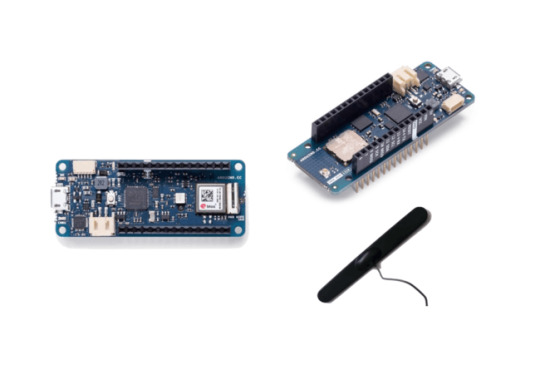
View On WordPress
0 notes
Text
Arduino MKRシリーズ、スイッチサイエンスウェブショップで2021年8⽉6⽇販売開始
Arduino MKRシリーズ、スイッチサイエンスウェブショップで2021年8⽉6⽇販売開始 #ArduinoMKRシリーズ #スイッチサイエンス #Wi-Fi #LoRaWAN #GSM通信 #新製品 #Arduino
これは嬉しい。 LoRaWAN や Wi-Fi 接続に対応した Arduino がスイッチサイエンスで販売開始となっています。 製品は2つに分かれていて、それぞれのお値段も、それほどお高くはない感じですので、これは使えそうな製品ですね。 Arduino MKRシリーズ、スイッチサイエンスウェブショップで2021年8⽉6⽇販売開始 株式会社スイッチサイエンス 株式会社スイッチサイエンス(以下スイッチサイエンス、本社:東京都新宿区、代表取締役:金本茂)は、Arduino Holding社のArduino MKRシリーズを、スイッチサイエンスのウェブショップにて2021年8月6日より販売開始します。 Arduino MKRシリーズ、スイッチサイエンスウェブショップで2021年8⽉6⽇販売開始 ▶︎ 「Arduino MKR WiFi 1010」の特徴 Arduino MKR WiFi…
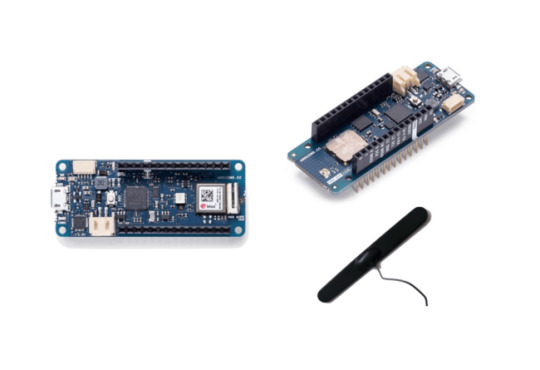
View On WordPress
0 notes
Text
LoRA and LoRaWAN for IoT: Getting Started with Long Range and LoRaWAN Specification for Low Power, Wide Area Networking
LoRA and LoRaWAN for IoT: Getting Started with Long Range and LoRaWAN Specification for Low Power, Wide Area Networking
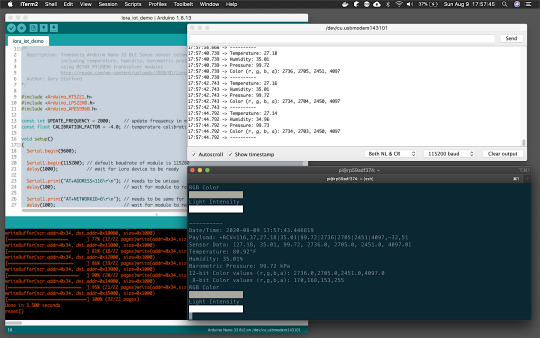
Introduction
According to the LoRa Alliance, Low–Power, Wide-Area Networks (LPWAN) are projected to support a major portion of the billions of devices forecasted for the Internet of Things (IoT). LoRaWAN is designed from the bottom up to optimize LPWANs for battery lifetime, capacity, range, and cost. LoRa and LoRaWAN permit long-range connectivity for the Internet of Things (IoT) devices in…
View On WordPress
0 notes
Photo
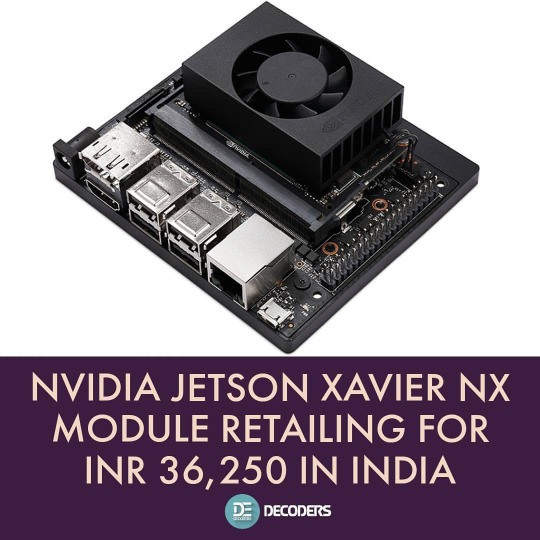
NVIDIA unveiled the Jetson Xaview NX at GTC 2020 in as a significant upgrade over the NVIDIA Jetson TX2. - ➖➖➖➖➖➖➖➖➖➖➖➖ Follow Us On: @decoders8421 Tag Your Friends 👼. Ask any query or doubt in comments. ➖➖➖➖➖➖➖➖➖➖➖➖ - #fpga #atmega #arm #nxp #embedded #iot #developmentboard #rpi #raspberrypi #arduino #arduinouno #raspberrypi3 #tinkercad #tinker #stm32 #esp32 #lorawan #lora #ai #ml #nvidiajetson #raspberrypi4 #sbc #cortex #udoo #singleboardcomputer #iot #zigbee #opencv #raspberrypicamera https://www.instagram.com/p/CBqioLhn3FT/?igshid=1w22j3p5uz7h
#fpga#atmega#arm#nxp#embedded#iot#developmentboard#rpi#raspberrypi#arduino#arduinouno#raspberrypi3#tinkercad#tinker#stm32#esp32#lorawan#lora#ai#ml#nvidiajetson#raspberrypi4#sbc#cortex#udoo#singleboardcomputer#zigbee#opencv#raspberrypicamera
0 notes
Text
MKR WAN 1310: Arduino apresenta uma nova placa com conectividade LoRa!
MKR WAN 1310: Arduino apresenta uma nova placa com conectividade LoRa!
A placa MKR WAN 1310 é de apenas 67,6 x 25,0 mm e integra um processador ARM Cortex M0 +. O MKR WAN 1310 já está disponível para pedidos por € 33 (~ US $ 37). A placa de 67,6 x 25,0 mm pesa 32 g e é equipada com um SoC Microchip Atmel SAMD21 que integra um processador ARM Cortex M0 +. O MKR WAN 1310 é mais eficiente que seus antecessores, graças às suas arquiteturas de carga e energia…
View On WordPress
0 notes
Text
Helium Network a maior rede de LoRaWAN do mundo
A Helium network é uma rede LoRaWAN descentralizada que utiliza uma estrutura de blockchain de modo que cada gateway atue como um validador e minerador de pacotes transacionados, essa estrutura garante um maior crescimento da rede com alta segurança.
A Helium network é uma rede LoRaWAN descentralizada que utiliza uma estrutura de blockchain de modo que cada gateway atue como um validador e minerador de pacotes transacionados, essa estrutura garante um maior crescimento da rede com alta segurança. 1 O que é Helium network? Basicamente, a Helium Network é uma rede sem fio descentralizada, código-aberto, que utiliza tecnologias LoRaWAN e 5G –…

Ver no WordPress
#helium lorawan#helium network#helium network architecture#helium network australia#helium network blockchain#helium network explained#helium network news#lorawan#lorawan architecture#lorawan arduino#lorawan devices#lorawan network#lorawan range
0 notes
Text
#HackTheBase IoT Hub - Rent dedicated desk for $500 per month with access to IoT hardware and software
We are offering to rent two dedicated desks at our office in Vancouver downtown (Seymour St. and Nelson St.). The rent is $500 per desk per month. Please see the photo below.
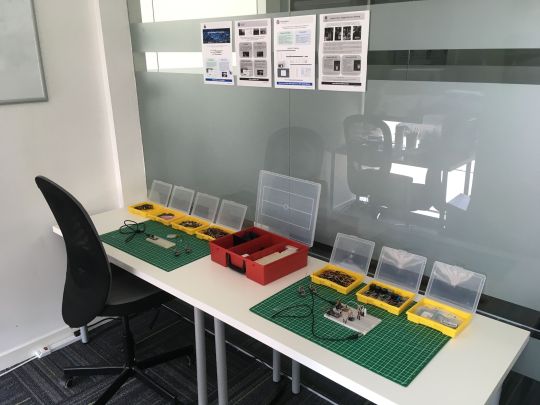
You will get access to the hardware and software resources that can help you to work on your IoT project. Please see https://hackthebase.com/iot-hub-lab for more details. If you don't have access to the LoRaWAN network, you can use the LoRaWAN gateway at the office. Data from the sensor you can access at The Things Network console. As a part of the rent, we are providing free four hours of consulting services per month for your IoT project. We organize regular event #HackTheBase IoT Garage for the Internet of Things and Open Hardware developers. Please see the video of the workshops we did in September. 1) Environment monitoring with The Things Network, InfluxDB, and Grafana
Slides: https://drive.google.com/open?id=1eniaB84t7fcsx1t2sj50CuGhhJn-p38l Video: https://youtu.be/StEHYDk_lVw Workshop materials: https://github.com/ucwlabs/iot-monitoring-ttn 2) Environment monitoring with MQTT, InfluxDB, and Grafana Slides: https://drive.google.com/open?id=1XYr1KQWU233362ymV5fVowYsThvOCpUj Video: https://youtu.be/puEkexriMVw Workshop materials: https://github.com/ucwlabs/iot-monitoring-mqtt 3) Environment monitoring with Particle Device Cloud, InfluxDB, and Grafana The video and workshop materials we will share later this week. You will get access to the Particle Boron LTE devices to work on your LTE-M project. The price per desk is $500/month. Available from October 2019. If you are interested or need more details, contact us please at [email protected] or (778) 989 4861, (604) 449 2256.
0 notes
Text
#HackTheBase IoT Hub - Rent dedicated desk for $500 per month with access to IoT hardware and software
We are offering to rent two dedicated desks at our office in Vancouver downtown (Seymour St. and Nelson St.). The rent is $500 per desk per month. Please see the photo below.

You will get access to the hardware and software resources that can help you to work on your IoT project. Please see https://hackthebase.com/iot-hub-lab for more details. If you don't have access to the LoRaWAN network, you can use the LoRaWAN gateway at the office. Data from the sensor you can access at The Things Network console. As a part of the rent, we are providing free four hours of consulting services per month for your IoT project. We organize regular event #HackTheBase IoT Garage for the Internet of Things and Open Hardware developers. Please see the video of the workshops we did in September. 1) Environment monitoring with The Things Network, InfluxDB, and Grafana
Slides: https://drive.google.com/open?id=1eniaB84t7fcsx1t2sj50CuGhhJn-p38l Video: https://youtu.be/StEHYDk_lVw Workshop materials: https://github.com/ucwlabs/iot-monitoring-ttn 2) Environment monitoring with MQTT, InfluxDB, and Grafana Slides: https://drive.google.com/open?id=1XYr1KQWU233362ymV5fVowYsThvOCpUj Video: https://youtu.be/puEkexriMVw Workshop materials: https://github.com/ucwlabs/iot-monitoring-mqtt 3) Environment monitoring with Particle Device Cloud, InfluxDB, and Grafana The video and workshop materials we will share later this week. You will get access to the Particle Boron LTE devices to work on your LTE-M project. The price per desk is $500/month. Available from October 2019. If you are interested or need more details, contact us please at [email protected] or (778) 989 4861, (604) 449 2256.
0 notes
Link
When the critical infrastructure that so many of us take for granted goes away, how do we organize ourselves and our communities to respond?
If recent ecological disasters have demonstrated anything, it is the inadequacy of existing models and tools to provide efficient allocation of resources, access to emergency communications, and effective coordination of human effort. Few if any solutions exist that are off-grid, affordable, reliable, easily deployed, and openly standardized.
...
disaster.radio is an off-grid, solar-powered, long-range mesh network built on free, open source software and affordable, open hardware.
Designed to be open, distributed, and decentralized, disaster.radio is currently in the prototype/development phase. To learn more about the technologies driving our development, visit the following pages:
Firmware Hardware Software User guides
disaster.radio is a collaborative project between Sudo Mesh and Secure Scuttlebutt, with additional support from the Internet Society and Institute For the Future.
Read more: https://disaster.radio/
#arduino #lora #lorawan #radio #ham #offgrid #solar #mesh #network
youtube
5 notes
·
View notes
Text
Módulo LoRaWAN da Radioenge Tutorial Completo
O módulo LoRaWAN da Radioenge é homologado pela Anatel e 100% fabricado no Brasil e neste post você aprende tudo sobre ele.
O módulo LoRaWAN da Radioenge é uma placa de fabricação nacional e homologada que pode ser usada com qualquer microcontrolador ou microprocessador através de comandos AT via porta serial. 1 O que é LoRaWAN? O LoRaWAN é um protocolo que desenvolvido para aumentar o alcance da rede LoRa e utiliza nós em estrela para diminuir ao máximo o consumo da bateria, de modo que os ‘end nodes’ fiquem…

Ver no WordPress
#arduino lorawan#arduino lorawan library#class a lorawan#esp32 lorawan#esp32 lorawan gateway#lorawan#lorawan board#lorawan concentrator#lorawan development kit#lorawan devices#lorawan esp32#lorawan examples#lorawan gateway#lorawan network
1 note
·
View note